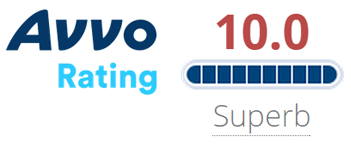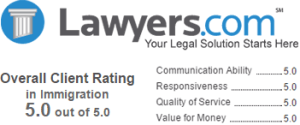Since 1976, international medical graduates (“IMGs”) have been barred from obtaining many types of benefits under U.S. immigration laws even after they have completed medical residencies and fellowships in the U.S. Many of these restrictive laws remain on the books despite the tremendous need for various types of physicians across the U.S. The Department of Health and Human Services’ listing of Health Professional Shortage Areas occupies nearly 100 pages of small print.
In 1991, this “Berlin Wall” of laws barring most IMGs from being sponsored by their employers to practice medicine in the United States began to crumble. With the aid of an increasing number of federal and state agencies, hundreds of hospitals, group practices and HMOs started sponsoring IMGs for both temporary working visas and permanent residence. In addition, many residency programs began to admit IMGs on temporary working (“H-1B”) visas rather than exchange visitor (“J-1”) visas. An H-1B visa allows an IMG freedom from the onerous requirement written into the 1976 law that IMGs on J-1 visas must return home for a minimum of two years after completing medical residencies and fellowships in the U.S.
Physicians may search for job opportunities online.
Client Reviews

Highly Competent Legal Services
“I work with Merritt Hawkins, the largest physician search firm in the United States. For over 20 years, we have partnered with The Law Offices of Carl Shusterman, which assists us in obtaining visas for the many international physicians we recruit. Mr. Shusterman and his staff have been an indispensable resource of expertise, allowing us to recruit international doctors in the most efficient manner possible on behalf of our clients.”
- Phil Miller, Merritt Hawkins, Dallas, Texas
Read More Reviews
Zoom Consultations Available!
J WAIVERS FOR IMGs
States require that IMGs pass certain tests and complete a medical residency program in the U.S. before they can qualify for licenses. Since 1976, U.S. immigration laws have forced thousands of IMGs to obtain “J-1” visas in order to pursue medical residencies and fellowships in the U.S. By law, any IMG who uses a J-1 visa for this purpose is subject to the two-year foreign residency requirement mentioned above.
The law provides that the two-year residency requirement may be waived under the following circumstances:
- If the IMG can demonstrate that he cannot return to the country of his nationality or last residence because he would be subject to persecution on account of race, religion or political opinion;
- If the IMG can prove that returning to his country would result in “exceptional hardship” to his spouse or children who are U.S. citizens or permanent residents; or
- If the IMG is sponsored by an “interested governmental agency”.
Because waivers based on persecution or hardship are rare, most IMGs who seek waivers do so by searching for an interested governmental agency to sponsor them.
SPONSORING AGENCIES
1. State Departments of Public Health
Traditionally, only agencies of the federal government have been permitted to sponsor IMGs for waivers of the two-year foreign residency requirement. However, in 1994, a law was enacted which permits state departments of public health to sponsor IMGs for J-1 waivers.
An amendment sponsored by Senator Kent Conrad (D-ND) to the Immigration and Nationality Technical Corrections Act of 1994 (INTCA) created a program under which each state (plus Guam, Puerto Rico, Washington D.C. and the U.S. Virgin Islands) may sponsor up to 20 IMGs for J-1 waivers each year.
To be eligible to participate in a “Conrad” program, an IMG must agree to be employed for a minimum of three years in a facility that is located in an area designated by HHS as having a shortage of physicians.
Regulations specify that an application must include the following documents: (1) A letter from the State Department of Public Health identifying the physician and specifying that it would be in the public interest to grant him a J waiver; (2) An employment contract valid for a minimum of three to five years, depending on the state. The contract must state the name and address of the facility for which the physician will be employed and the geographic areas in which he will practice medicine; (3) Evidence that the these geographic areas are located within HPSAs, MUAs or MUPs; (4) A statement by the physician agreeing to the contractual requirements; (5) Copies of all IAP-66 forms; (6) Completed State Department Data Sheet; and (7) Each application must be numbered sequentially (since the number of physicians who may be granted waivers in a particular state is limited).
Requirements for additional documentation vary depending on the particular state department of public health involved.
On November 2, 2002, an amendment to the immigration laws was enacted which permits state departments of public health to sponsor 30 physicians per year for J waivers.
On December 3, 2004, the President signed a law which both extended and expanded the state and federal J waiver programs for physicians. The law extends the Conrad 30 programs for another two years until 2006 and allows each Conrad state to sponsor up to five physicians who practice medicine outside of a HPSA/MUA but whose patients are primarily located in HPSAs and MUAs. The law also provides that physicians in H-1B status who have received J waivers are not subject to the H-1B numerical cap,and that federal agencies are now free to sponsor physicians who are specialists for J waivers.
We link to each Conrad 30 state which has a web site listing the criteria for participating in their J waiver program for physicians.
2. Department of Health and Human Services (HHS)
* Primary Care Physicians
On December 19, 2002, the HHS published regulations announcing that the Department would act as an interested government agency (IGA) to sponsor primary care physicians who agree to work in federally-designated medically underserved areas for J waivers.
In December of 2003, HHS announced a revision in the criteria for its J-1 physician visa waiver program. The new criteria exclude review of waiver applications from hospitals. In addition, where the previous HHS program required that the employment be located in a federally-designated HPSA or in a Medically Underserved Area or Population (MUA/P), the new rule restricts sponsorship of J waivers to physicians who agree to practice in HPSAs (not MUAs or MUPs) with a score of 14 or higher. This is an exceptionally high standard, and the consequence of these changes is that it precludes hospitals and hospital-based health clinics in most shortage areas from participating in the waiver program.
* Biomedical Researchers
In a regulations published in 1984, HHS published rules establishing an Exchange Visitor Review Board and promulgating “stringent and restrictive criteria” to consider requests for waivers of the foreign residency requirement for physicians.
In determining whether to sponsor an IMG for a waiver, the Board considers the following key factors: (1) The program or activity in which the IMG is engaged must be “of high priority and of national or international significance in an area of interest” to HHS. Merely providing medical services in a medically underserved area is not sufficient; (2) The IMG must be an “integral” part of the program or activity “so that the loss of his/her services would necessitate discontinuance of the program, or a major phase of it”; and (3) The IMG “must possess outstanding qualifications, training and experience well beyond the usually expected accomplishments at the graduate, postgraduate, and residency levels, and must clearly demonstrate the capability to make original and significant contributions to the program”.
We link to the portion of the HHS web site which contains a section regarding the HHS J Waiver Program for physicians which includes a FAQ, explains the submission procedures and contains a downloadable application form.
3. Veterans Administration (VA)
With over 170 health care facilities located in various parts of the U.S., the VA is a major employer of physicians. In addition, many VA hospitals are affiliated with university medical centers. Unlike HHS, the VA will sponsor IMGs involved not only in research, but in patient care (regardless of specialty) and teaching.
VA guidelines provide that it will act as an interested government agency only where the loss of the IMG’s services would necessitate the discontinuance of a program, or a major phase of it, and that recruitment efforts have failed to locate a U.S. physician to fill the position.
The procedure for obtaining VA sponsorship for a J waiver is as follows: (1) The IMG should deal directly with the Human Resources Department at the local VA facility; (2) The facility must request the VA’s Chief Medical Director to sponsor the IMG for a waiver.
The waiver request should include the following documentation: (1) A letter from the Director of the local facility describing the program, the IMG’s immigration status, the health care needs of the facility, and the facility’s recruitment efforts; (2) Recruitment efforts including copies of all job advertisements run within the preceding year; and (3) Copies of the IMG’s licenses, test results, board certifications, IAP-66 forms, etc.
We link to the Veterans Administration web site.
4. The Appalachian Regional Commission (ARC)
The ARC is comprised of over a dozen states on the East Coast and in the South. These states include Alabama, Georgia, Kentucky, Maryland, Mississippi, New York, North Carolina, Ohio, Pennsylvania, South Carolina, Tennessee, Virginia and West Virginia. Since 1992, the ARC has sponsored primary care IMGs in counties within its jurisdiction that have been designated as HPSAs by HHS.
The ARC requires that waiver requests be submitted initially to the ARC contact person in the state of intended employment. If the state concurs, a letter from the State’s Governor recommending the waiver must be addressed to the Federal Co-Chairman of the ARC. Also included in the waiver request should be: (1) A letter from the facility stating the proposed dates of employment, the IMG’s medical specialty, the address of the practice location, an assertion that the IMG will practice primary care for at least 40 hours per week in the HPSA, and details as to why the facility needs the services of the IMG; (2) J-1 Visa Data Sheet; (3) ARC Federal Co-Chairman’s J-1 Visa Waiver Policy, and the J-1 Visa Waiver Policy Affidavit and Agreement with the notarized signature of the IMG; (4) A contract of at least two years duration; (5) Evidence of the IMG’s qualifications including a resume, medical diplomas and licenses, and IAP-66 forms; and (6) Evidence of recruitment efforts within the preceding six months, including copies of advertisements, copies of resumes received and reasons for rejection.
We link to the ARC web site which contains information about the agency’s J waiver program for physicians.
4. The Delta Regional Authority (DRA)
The DRA is a federal-state partnership established by law in December 2000 to channel resources, aid and guidance for economic development to the Mississippi Delta region. The Authority’s region includes 240 counties in the following eight states: Alabama, Arkansas, Illinois, Mississippi, Missouri, Kentucky, Louisiana and Tennessee.
The DRA Program Guidelines require that a physician commit to work 40 hours per week in a DRA area which is either a Health Professional Shortage Area (HPSA), a Medically Underserved Area (MUA) or, in the case of a psychiatrist, in a Mental Health Professional Shortage Area (MHPSA). The employer must actively recruit for U.S. physicians for six months before it can sponsor a foreign-born physician. The contract must not contain a non-compete clause or any other restrictive covenant. The employer must not provide services to patients who cannot afford to pay, must accept both Medicare and Medicaid patients, and must provide services on a sliding scale to patients who are uninsured, low income, and must post a public notice at the facility stating this policy. The employer must demonstrate that they have had such a policy during the past three years.
There is a $2,000 nonrefundable fee for participation in the DRA program.
The state agency will act upon the application within 45 days. The DRA will generally make a recommendation to the Department of State within 60 days.
The “Physician Employment Verification Form” must be submitted to the DRA within the physician’s first week of practice.
The DRA will mail “site surveys” to both the employer and the physician every six months during the life of the physician’s employment contract. The DRA or its agent may conduct random “unannounced site visits” during this period of time.
We link to the Delta Regional Authority web site which contains information regarding the agency’s J waiver program for physicians.
CANADIAN-TRAINED PHYSICIANS
Graduates from Canadian medical schools, whatever their country of origin, are not considered to be IMGs. This is because the U.S. Department of Education through the Licensing Committee on Medical Education (LCME) has certified all U.S. and Canadian medical schools.
Over 40 states accept passage of the Licentiate of the Medical Council of Canada examination (LMCC), also known as the Medical Council of Canada Qualifying Exam (MCCQE), for licensure. A Canadian physician who is licensed in the state of intended employment and who has passed both parts of the Federation Licensing Examinations (FLEX), or an equivalent examination as designated by the Secretary of HHS, is eligible to be petitioned for H-1B temporary working status. HHS has designated the following examinations as equivalent to the FLEX: (1) the National Board of Medical Examiners (NBME) examination, parts I, II and III; and (2) the United States Medical Licensing Examination (USMLE), parts I, II, and III. Of these three examinations, only the USMLE is currently being offered.
Canadian physicians who are licensed in the state of intended employment may apply to immigrate to the U.S. through employer sponsorship whether or not they have passed the FLEX, NBME or USMLE examinations. In a peculiar anomaly, many physicians who are eligible for both state licensure and permanent residence, are nonetheless barred from obtaining temporary H-1B status.
H-1B MEDICAL RESIDENTS
Since 1991, the law has allowed medical residency programs to sponsor foreign-born medical residents for H-1B, as an alternative to J-1, visas. Every year, hundreds of IMGs complete medical residency programs in the U.S. on H-1B visas thereby avoiding the two-year foreign residency requirement.
Upon completion of their residency programs, these physicians are able to obtain H-1B visas and permanent resident status through employer sponsorship. Other IMGs holding H-1B visas are able to immigrate to the U.S. through close relatives who are U.S. citizens or permanent residents.
In order to obtain H-1B status as a medical resident, an IMG must have passed all parts of either the FLEX, the NBME, or the USMLE examinations. Most states will not allow medical residents to take USMLE, Part III until they have completed the first year of their residency programs. However, there are 11 states which permit persons to take USMLE, Part III prior to entering a residency program: Connecticut, Arkansas, California, Florida, Louisiana, Maryland, Nevada, New York, Texas, Virginia and West Virginia. IMGs interested in being sponsored for H-1B status must travel to one of these states to take and pass USMLE, Part III before they may be sponsored for an H-1B visa.
For more detailed information about obtaining H-1B visas and permanent residence for IMGs and Canadian physicians, see our Medguide
CONCLUSION
Despite some significant obstacles, there are a number of forms of relief available to foreign medical graduates who seek to practice medicine in the U.S. Each of these alternatives requires careful planning and a significant commitment of time and resources.
The best course of action for IMGs is to obtain H-1B visas to pursue their medical residencies. However, where IMGs have already been accorded J-1 status, opportunities to obtain waivers of the two-year home residency requirement exist for those who are willing to make a commitment to practice in medically underserved areas, for the VA and for certain outstanding researchers.








